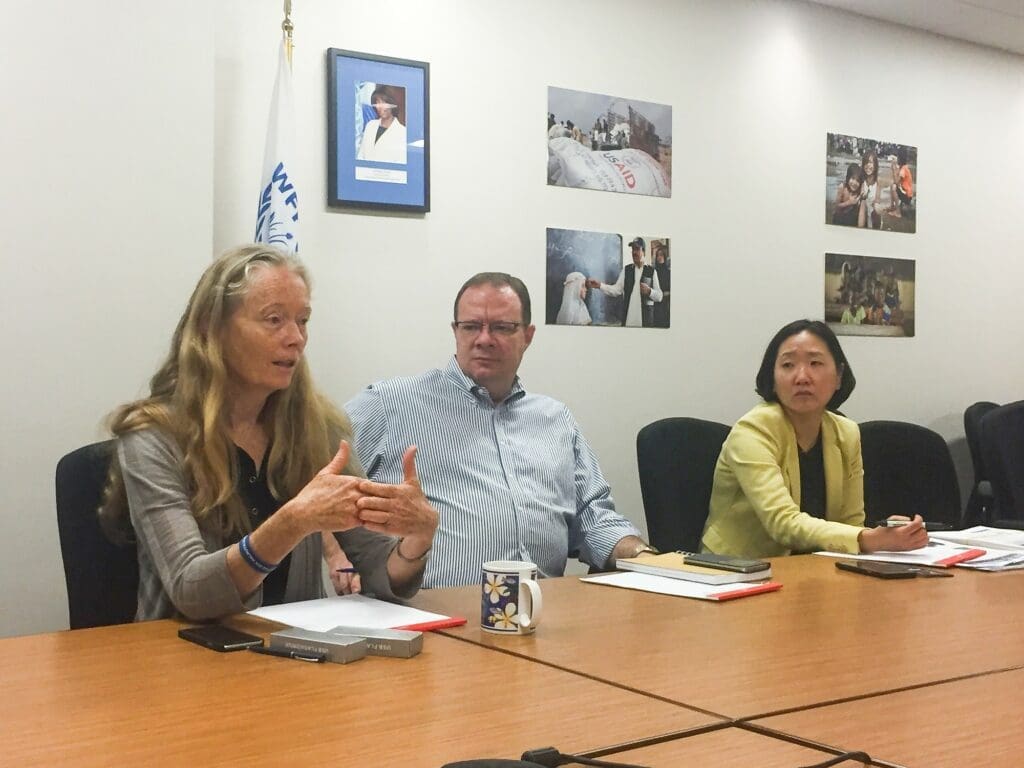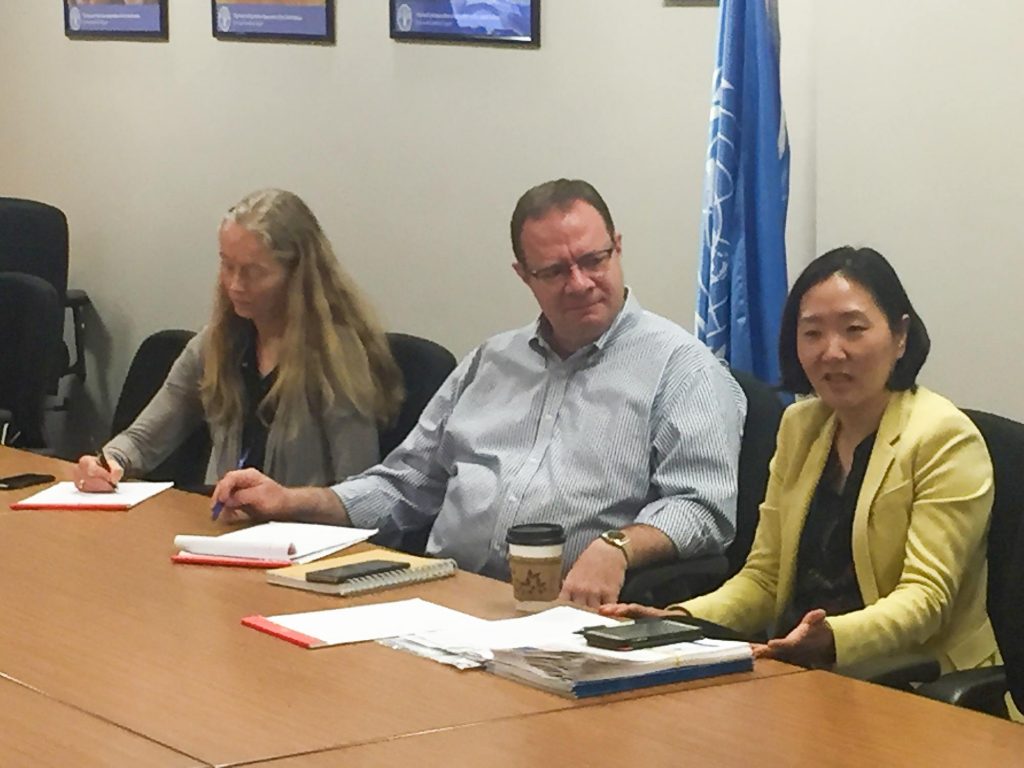The Road Ahead for Food Security in Colombia and Ecuador

Critical events this year have impacted two neighboring countries in South America: April’s 7.8 magnitude-earthquake in Ecuador and news from Colombia last month that the longest-running civil war in Latin America might at long last come to an end.
From preparing for a historic peace accord in Colombia to transitioning support in Ecuador from emergency assistance to more strategic capacity-building efforts, the U.N. World Food Programme (WFP) is working with local farmers, schools and leaders to make timely inroads on food security. And yesterday, WFP directors from each country traveled to Washington, D.C. to meet with U.S. lawmakers and WFP staff and provide an inside look at what is happening within these two Andean countries.

WFP USA/Ash Kosiewicz
Outlook in Columbia
WFP’s Columbia Country Director Deborah Hines shared her perspective on how the agency would support the implementation of a peace agreement between the government and the Revolutionary Armed Forces of Colombia (FARC).
Key parts of the accord address food security, rural development as well as land restitution and ownership. As the demobilization of armed groups begins, she says she doesn’t expect the country’s potential first steps toward peace to come easily.
“For the next three years, humanitarian assistance and humanitarian needs are probably going to increase, not decrease,” Hines said. “This is the time to support the peace process.”
In rural parts of the country that are inaccessible to the government, Colombia continues to face high rates of malnutrition. In the department of La Guajira, for example, 45 children have died from malnutrition this year alone, Hines said. With the support of the U.S. Food for Peace program, WFP continues to provide in-kind food assistance to some of the more than 89,000 people who are expected to have been displaced this year.
Hines also said WFP is working to encourage more people to eat highly nutritious local crops that are typically sold on the market, including quinoa. A new collaboration with private sector partner DSM is also helping WFP explore how it can fortify rice and work with the local community to recover and fortify traditional native crops for enhanced nutritional benefit.
Outlook in Ecuador
In Ecuador, WFP is phasing out support for more than 100,000 people still impacted by the April 16th earthquake that struck the northern coast last spring.
The local office has worked closely with the government to integrate assistance within Ecuador’s existing social protection system, helping reach more than 200,000 Ecuadoreans with emergency aid. As of now, 100 percent of WFP’s support comes in the form of cash and food vouchers to help families buy meat, dairy, fresh fruits and vegetables from local supermarkets. Earthquake victims will continue to receive this monthly cash assistance through November.

WFP USA/Ash Kosiewicz
Ecuador is also host to the largest number of refugees in Latin America, most of whom are from neighboring Colombia. As part of its support for refugees, WFP is sourcing its school meals with food from local farmers’ associations and conducting cooking classes with vulnerable families. The agency also collaborates with the World Health Organization and UNICEF to provide nutrition trainings for new mothers in exchange for food vouchers.
“There is a lot of stigma against Colombians that come to Ecuador,” said WFP’s Country Director in Ecuador Kyungnan Park. “We are trying to sensitize and integrate the Colombian population.”
WFP also recently worked with a local telephone company to pilot sending nutritional information to families via text message. The country office hopes to build more knowledge regarding their efficacy and better measure the impact of its school meals program within a longer-term vision for success as the agency hands over more of its programming to the government. A recent study found that WFP’s food vouchers in Ecuador helped reduce intimate partner violence, easing tensions within families.




